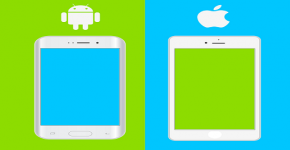IoT Explained: The Ultimate Beginner’s Guide
Nothing is more exciting than the evolution of new-age technologies. These are designed to make our lives easy and more productive. IoT is among those technologies that have taken the entire IT sector to new heights of success.
The term IoT or Internet of Things, is the collective network of connected devices and the technology that supports communication between devices and the cloud. Let’s discover more, unveil everything about IoT, and help you understand things better.
Let’s Get Started!
What is IoT?

IoT, or the Internet of Things, connects everyday devices to the Internet. These devices, like smart thermostats or wearables, can collect and share data, allowing for automation and remote control.
For example, a fitness tracker can monitor your heart rate. IoT is transforming how we live and work.
This means daily devices like cars, robot vacuums, toothbrushes, and cars use sensors to respond to users and collect data. You can also add connectivity with Siri or Alexa voice service capabilities to MCUs with less than 1MB-based RAM, such as light switches.
It means technology-driven homes, businesses, and commercial spaces are filled with IoT devices. These smart devices can make your life easier and more productive.
How Does IoT Work?
Three steps will help you understand the working procedure of IoT:
- Data Collection
Smart devices come with sensors that gather information about their surroundings and internal state. This data can be anything, such as room temperature, humidity level, usage pattern, location, etc.
- Data Transmission
Next, the collected data is sent to a central system, also known as a cloud-based platform, through the Internet. You may need to access the Wi-Fi or cellular networks for smooth transmission. The data will be stored for in-depth analysis and processing.
- Data Analysis and Action
The collected data will be analyzed and extracted into meaningful insights. This could include notifications, optimizing processes, and controlling other devices. For instance, the smart thermostat data may show a high temperature and the system will automatically adjust the AC settings.
Key Examples of IoT Devices?
Have a look at some of the key examples of IoT systems that are trending these days:
- Smart Home Devices
These new-age devices are focused on boosting energy efficiency and safety features in residential properties. Devices like smart thermostats, smart outlets, lighting sensors, etc can help you save energy, and money and let you control the temperature in your home. Hydroponic systems can leverage IoT sensors to manage the garden while smoke detectors can detect smoke and prevent fire hazards.
Home security systems like security cams, door locks, and even water leak detectors have become the need of an hour as these can send alerts to the users.
You can also use a robotic vacuum to clean your floors. The sensors can detect dirt and the navigation system can easily roam and clean floors without hitting the objects. You can use it even if you are not at home.
- Connected Cars
Nowadays, cars are connected to the internet, It can be through smart dashcams, infotainment systems, and connected gateway. They collect data from brakes, speedometer, accelerator, wheels, odometer, and fuel tanks to monitor both driver performance and vehicle health.
- Connected cars can track driving behavior
- Monitor rental car fleets to boost fuel efficiency and minimize cost.
- Notifying friends and family instantly in case of a car crash situation.
- Smart Cities
IoT applications have developed and taken urban planning and infrastructure to new heights and success. Governments all around the world are leveraging IoT apps to cope with issues in the healthcare sector, infrastructure and development, and the environment, These apps can be used for:
- Minimizing energy bills using smart lighting systems
- Measure Air Quality and pollution
- Detecting maintenance requirements, such as bridges, streets, and pipelines.
- Boosting profits via efficient parking management.
- Smart Buildings
This includes commercial spaces, residential properties, and colleges. These use IoT apps to deliver better operational efficiencies. These devices can be used in smart buildings for the following:
- Reducing energy consumption
- Reducing maintenance costs
- Strengthening fire safety, and much more.
What are the Advantages of IoT for Businesses?
Have a look at the following benefits that businesses can leverage and generate more revenue:
- Increased Efficiency
IoT devices can automate tasks while reducing manual labor and errors. For instance, smart sensors can optimize energy consumption in buildings, saving money.
- Improved Decision Making
IoT produces a huge amount of data. Analyzing this data provides valuable insights for informed decision-making.
- Enhanced Customer Experience
IoT devices can customize customer interactions and enhance the experience. For instance, smart home devices offer tailored experiences based on user preferences, improving customer satisfaction.
- Predictive Maintenance
IoT sensors can monitor equipment health, predicting failures before they occur. This prevents costly breakdowns and downtime.
- New Revenue Streams
IoT can create new business opportunities. For example, companies can develop IoT-based products or services, generating additional revenue.
Wrapping Up
IoT devices have changed the entire world. It made things easy, reduced pollution, provided smart devices, connected cars, and much more. You can make the most of IoT technology and take your business to the next level.





